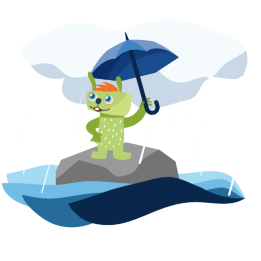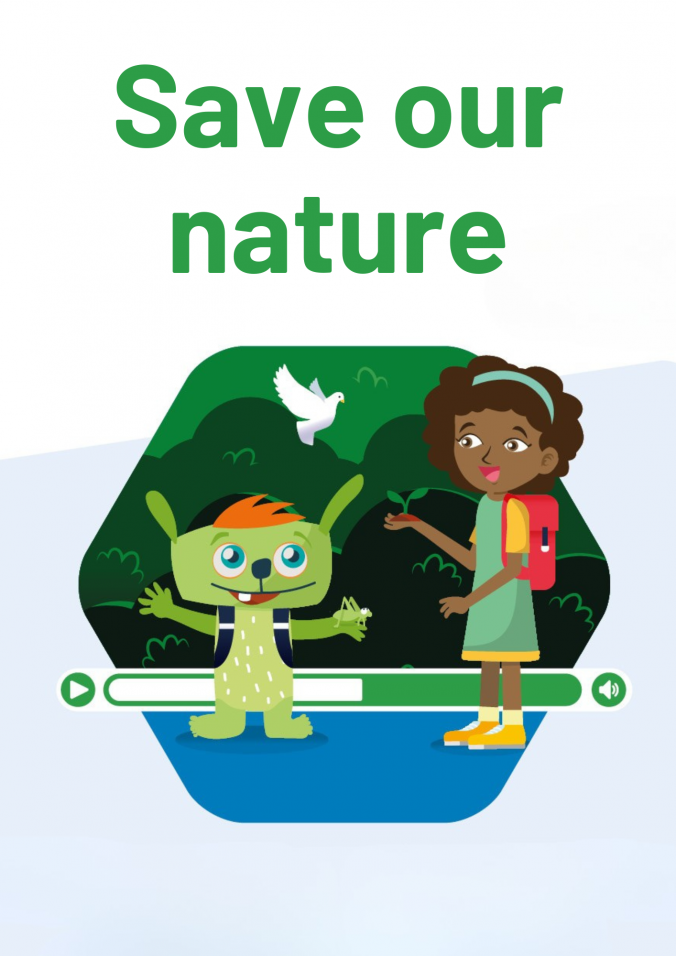Does Rubbish Float or Sink?

Overview
Overview
Keywords: float, sink, water, sea, lake, river, canal, pollution, marine life, biodiversity
Subjects: science, social and scientific education, citizenship, geography, environmental education
Age group: 4-12 years old
Difficulty level: ● ○ ○ (easy)
![]()
![]()
![]()
![]()
This experiment is part of the unit "Water Works" written by: Iro Koliakou (GR), Cláudia Meirinhos (PT), Jane Shimizu (IE)
Ocean pollution is a serious problem that affects marine life and the health of our oceans. It is caused by human activities such as littering, dumping waste into the ocean, and oil spills. Ocean pollution harms animals by entangling them in plastic debris or exposing them to toxic chemicals. It also damages entire ecosystems like coral reefs and estuaries. We can reduce our impact on the ocean environment by reducing plastic use, properly disposing of rubbish, supporting eco-friendly products, and properly disposing of hazardous waste.
Students can be made aware of the problems associated with ocean and water pollution by firstly investigating whether items of rubbish float, do not float or sink in water and then looking at the impact of litter on marine life.
Skills of questioning, observing, predicting, investigating, experimenting, estimating, measuring, analysing, recording and communicating will be taught.
It is important to investigate whether different types of litter will float, will not float or will sink as this information will help students understand that each type of litter can have a different impact on how marine life will be affected by the litter. For example, sea birds may try to eat rubbish that floats. Turtles, fish and sea creatures may get tangled in rubbish that floats or partially floats. Fish and other sea creatures may eat rubbish that has sunk to the bottom of the ocean.
Litter that floats may be more easily collected when cleaning areas of polluted ocean. Beach clean-ups, floating nets for gathering rubbish and river interceptors, mesh fences and bubble barriers are all methods of picking floating rubbish from our waterways. 1
The experiment
Do pieces of rubbish float, sink or perhaps not sink entirely?
Required materials
- Bowl of water, empty drinks can, soda can tabs, plastic bottle, scissors, pen, wipes, polystyrene, balloon, face mask, baby wipes, forks of different materials, scissors, coins, cotton buds, any other material to be tested
- Computer or laptop, projector, screen
- Worksheet, optional: vocabulary card
Experiment guide
- Discuss what students consider as “rubbish”, “trash” or “litter”.
- Gather materials listed above (or other materials suggested by the students).
- Predict whether each piece of rubbish will float, will sink or will partially float.
- Discuss whether other considerations such as size, material, shape, salinity of the water etc. will make a difference to whether the item floats, partially floats or sinks in water.
Safety note
Mop up spills as they occur to prevent falls.
Questions for students
Predict whether the item will float or will sink in water.
- What do you think will happen if the next item is similar but not exactly the same in terms of size, shape or material?
- Will adding salt to the water affect the way the item floats?
The experiment with the result
Do pieces of rubbish float or partially or fully sink to the bottom of the container/pond?
Explanatory video
After discovering which items of rubbish float and which sink then we need to think about the damage litter does to marine life.
- We will look at islands of litter in the ocean.
- We will look at an informative picture showing which are the most common types of litter found in the ocean.
- We will look at how ocean currents carry the litter around the world.
- We will look at how rubbish and pollution affect marine life.
- We will see how we can help keep our oceans clean.
Here you can download the transcript of the video as docx and pdf.
Items will float, will partially float or will sink in water. The size, shape and makeup of the material, along with the salinity of the water, will determine whether each item floats or sinks.
Objects float or sink based on their density relative to the fluid in which they are placed. If an object's density is lower than the fluid, it floats; if the object’s density is higher than the fluid, it sinks. Shapes with a large surface area and low density, like flat, wide objects, tend to float better, while compact, dense shapes are more likely to sink. Materials like wood and foam typically float because they are less dense than water, while metals sink because they are denser.
For an object to partially float, its density must be close to that of the liquid it's in, or its shape must be designed to displace enough liquid to support part of its weight while allowing the rest to be submerged. The salinity of water increases its density, which can cause an item to float more easily, partially float, or sink less readily compared to in freshwater.
How does this video link to sustainability?
Determining whether items of rubbish float or sink should lead to a discussion of how marine life can be affected by litter in our waterways. This should lead to a discussion on the importance of keeping our waterways clean and litter free, and of how each of us can take individual responsibility in looking after our oceans and waterways. We are responsible for doing our part in becoming custodians of the natural environment around us.
Differentiated learning
Explore ideas how you can use this material in your class and adapt it to a group of various levels and learning styles.
Items of rubbish can be chosen according to the age and understanding level of the students. Fewer items or more readily available items can be chosen for younger or less well able students.
Easier
This experiment can be made simpler by providing cards with the pictures of objects to be tested for floating or sinking. After the experiment the children can sort these cards into objects that float, that sink to the bottom, or that neither float on the top nor sink to the bottom.
More challenging
Students can discuss other items that are commonly found in waterways. These objects can also be tested. Many items that float or sink can be physically changed in some way leading to a different outcome. For example, a metal soda can may float if it has no solids or liquids inside but may sink if full of water or sand. Students can be encouraged to physically try and change the items tested for a different outcome.
Students can record their results in a graph or table.
Students can make their own video recording of their experimentation, or to present their findings to other students in the school.
Adding salt to the water will affect the salinity of the water, thereby affecting the density of the water. This in turn will affect how items will float or sink in water. Salinity describes how much salt is dissolved in a sample of water. The more salt that is dissolved in the water sample, the greater its salinity. If you compare two samples of water which have the same volume, the sample with the higher salinity will have greater mass and it will therefore be more dense. Repeat the experiment above adding varying amounts of salt to the water. Will this affect which items of rubbish will float or sink? Relate this to our nature; our oceans are salty but rivers, lakes and inland waterways are not salty.
Career orientation
Which career options are linked to this experiment and how can you introduce them to your students?
Working for healthy water bodies
Hydrologist
Hydrologists specialize in the study of water resources. They analyse the distribution, movement, and quality of water in the Earth's atmosphere and on its surface.
Water quality analyst
Water quality analysts assess and monitor the quality of water in various settings, such as rivers, lakes, and water treatment facilities. They ensure that water sources are safe and clean for human use.
Water resource manager
Water resource managers are responsible for overseeing the sustainable use and conservation of water resources at a waterworks. They work to ensure the efficient use of water for agriculture, industry, and municipal purposes.
Working for the environment
Climate scientist
Climate scientists study long-term patterns in weather and climate, and they investigate how climate change impacts the Earth's hydrological cycle.
Environmental engineer
Environmental engineers design solutions to environmental problems, such as water treatment systems and pollution control technologies. They play a crucial role in ensuring water quality and sustainability.
Environmental scientist
Environmental scientists study the natural world and its ecosystems. They work to understand and solve environmental issues, such as water quality and sustainability. This experiment provides a foundation for those interested in environmental science careers.
Outlook
After doing the experiment, students are encouraged to investigate further about marine pollution. Here are some ideas for research questions.
- Investigate floating and sinking in items of litter. Sort and classify. Where did this litter come from? (toilets, industry and factories, dumping etc.)
- Research the impact this litter has on marine animals. Do marine animals eat this litter? How does it affect them? Do marine animals get caught in the litter? Does this affect their lives?
- How can rubbish be taken from our waterways? What happens to the rubbish that is taken from our waterways?
- How can we effect change? How can we prevent marine pollution? How can we spread the message of keeping our waterways and oceans clean?
How do we Clean Up that Ocean Plastic?, Columbia Climate School
(last accessed 18.10.2024)Marine litter sources and the impact on our environment, Times of Malta
(last accessed 18.10.2024)The Water Crisis, Drop in the Bucket
(last accessed 18.10.2024)What color is drinking water?, charity: water
(last accessed 18.10.2024)Great Pacific Garbage Patch, National Geographic
(last accessed 18.10.2024)How Marine Debris Travels, National Oceanic and Atmospheric Administration (NOAA) Office of Response and Restoration
(last accessed 18.10.2024)The Ocean Cleanup
(last accessed 18.10.2024)Plastic Oceans
(last accessed 18.10.2024)What’s in the Great Pacific Garbage Patch?, Purple Turtle Co.
(last accessed 18.10.2024)Try out the experiment "Float or sink - How do different doughs behave in water?" from Lilu's House - Kitchen Curiosities (page 15) to further explore the topic of density.
Career orientation links:
Hydrologist, Career Girls
Environmental scientists, Career Girls(last accessed 01.04.2025)
This experiment is part of the unit "Water Works" written by: Iro Koliakou (GR), Cláudia Meirinhos (PT), Jane Shimizu (IE)
Share this page

